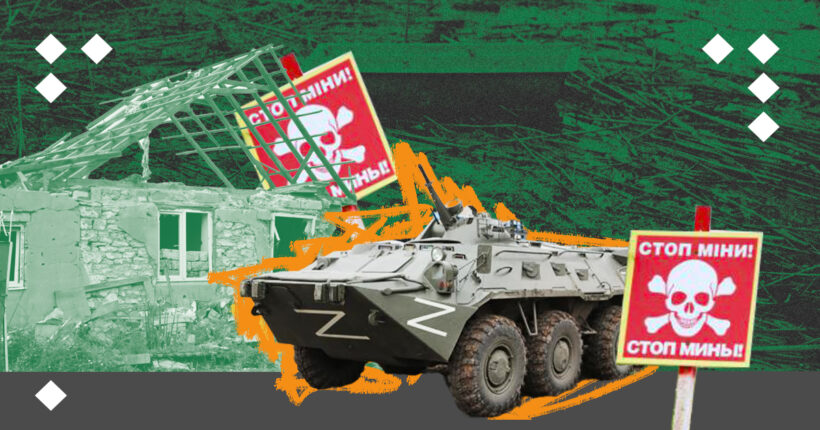
What is the problem?
According to calculations from the Ukrainian Ministry of Environmental Protection and Natural Resources, the Russian military has already caused two quintillion hryvnias' worth of environmental damage. The equipment destroyed by the occupiers has resulted in over 859,000 tons of waste and released over 83,000 tons of CO2 into the atmosphere.
"The environment knows no boundaries. Therefore, the entire world will be affected by the ecocide currently taking place in Ukraine. We must document all environmental offenses and devise a restoration plan. It is the responsibility of every citizen to protect the environment and safeguard the irreplaceable resources of our planet Earth," stated Yuliia Markhel, leader of Ukraine's largest environmental movement, "Let's Do It Ukraine."
Rubryka examines the damage done to Ukrainian nature by Russia under three categories.
Water
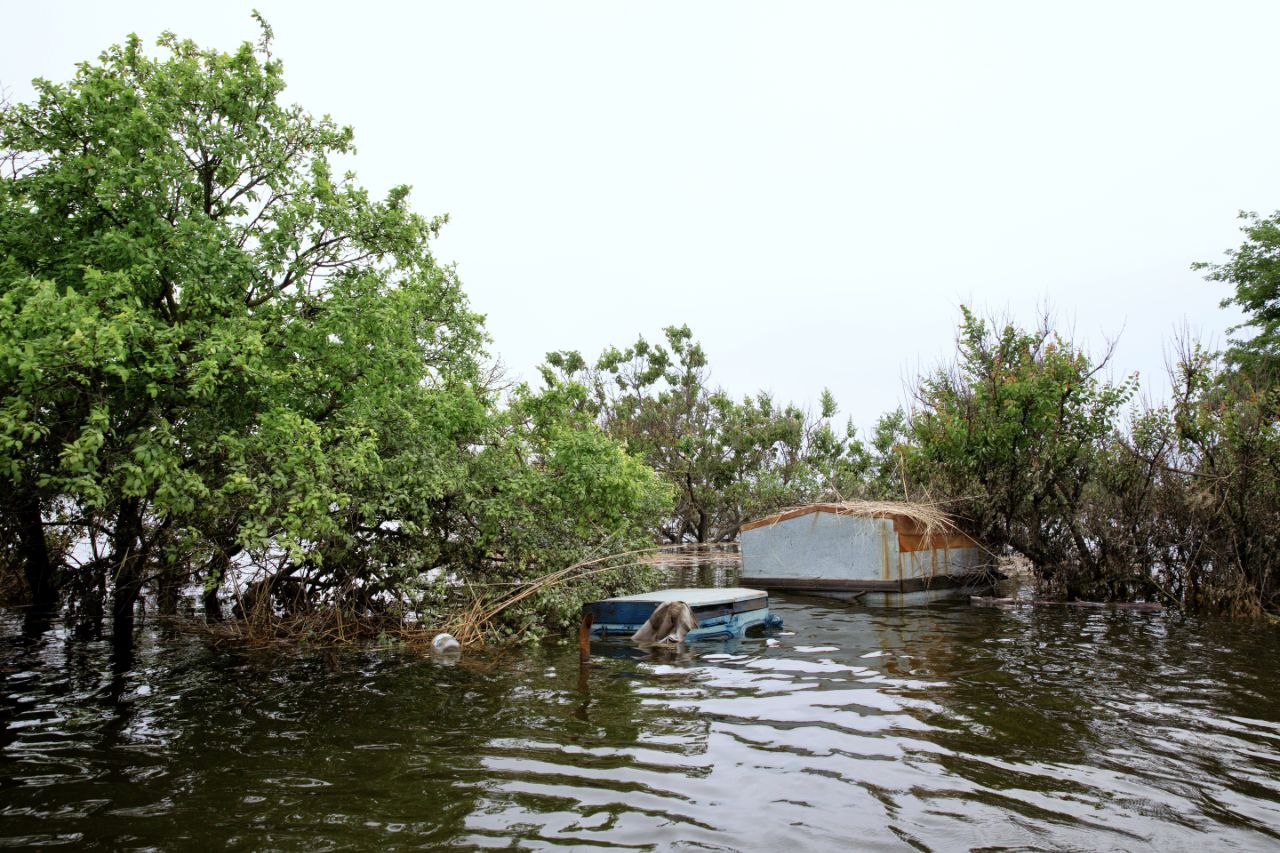 Flooding after the Russians blew up the Kakhovka HPP. Photo: Let's Do It Ukraine
Flooding after the Russians blew up the Kakhovka HPP. Photo: Let's Do It Ukraine
So far, since the start of the large-scale war, over 36,205 tons of foreign objects, materials, and waste, along with an additional 1,600 tons of pollutants, have entered Ukraine's water bodies. This is endangering aquatic flora and fauna, as well as human well-being.
However, the peak of ecological destruction in Ukraine was marked by the destruction of the Kakhovka HPP dam on June 6, 2023. This was the biggest man-made catastrophe in Ukraine since the explosion at the Chornobyl nuclear power plant. The impact of this environmental crime was most evident in aquatic ecosystems. In response, the "Let's Do It Ukraine" team, in collaboration with the Ukrainian Scientific Center for Marine Ecology (UkrNTSEM), carried out three environmental missions last year to examine the consequences of the Kakhovka disaster on water bodies. Consequently, they collected samples of water from reservoirs, wells, and bottom sediments in the Dnipro River, flooded regions, and the Dnipro-Buzka estuary.
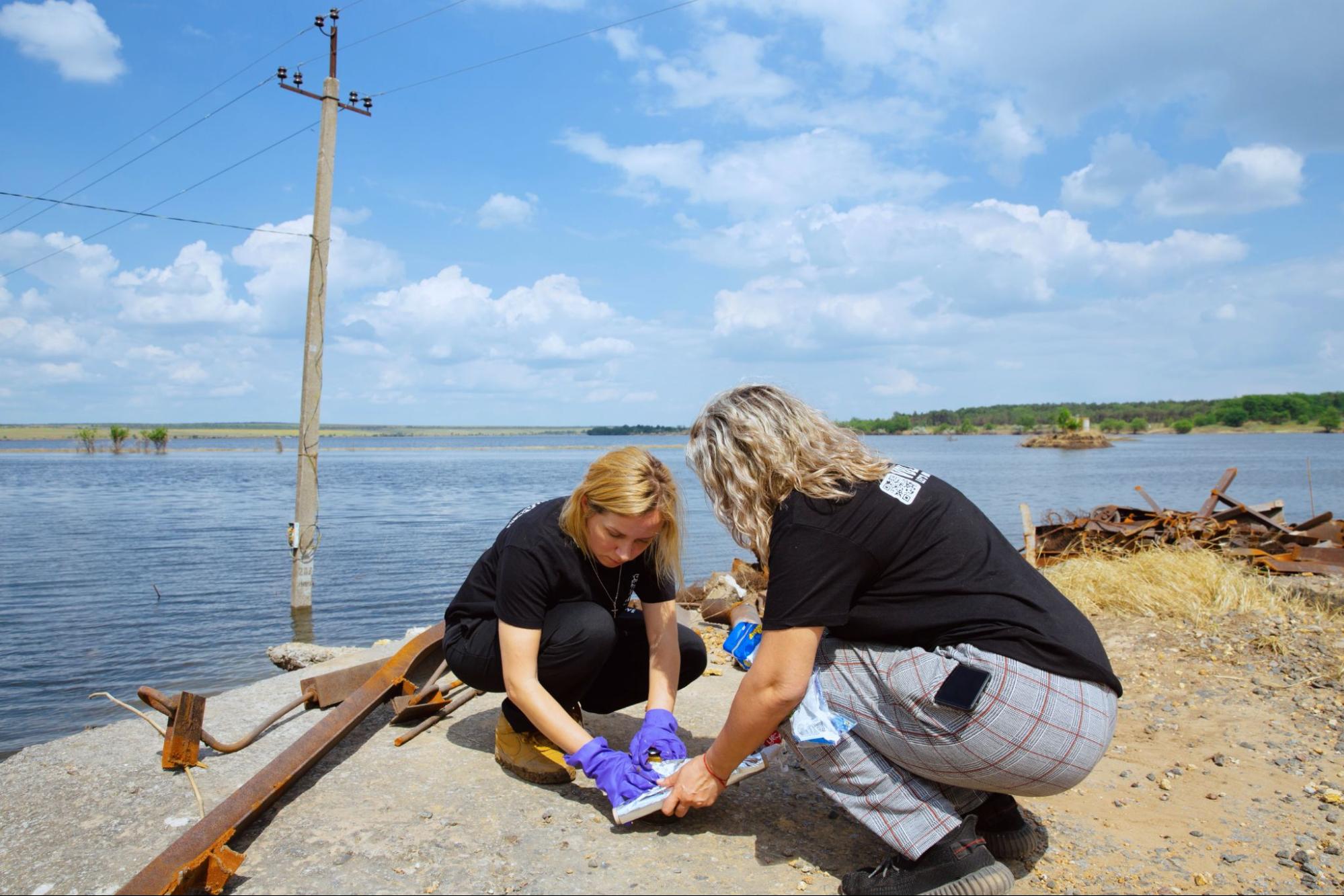
Taking water samples. Photo: Let's Do It Ukraine
Samples taken from the Dnipro River near Kherson, the Dnipro-Buzka estuary, the Black Sea near Ochakiv, and Odesa Bay all demonstrated the same pollution pattern. These locations all exhibited levels of petroleum products and toxic metals such as zinc, cadmium, arsenic, and organochlorine compounds that exceeded acceptable limits. Metals like zinc and cadmium can harm various aquatic life species, mainly when found at high levels. They can disrupt reproductive and growth processes in marine creatures. Even if some species can handle high amounts of copper and zinc, these metals can build up in the food chain, ultimately leading to elevated concentrations in creatures higher up on the food chain, such as marine animals and humans. Individuals who consume seafood or drink water with high levels of copper or zinc may face health issues related to the liver, heart, kidneys, or nervous system.
The research findings will also be used in criminal proceedings carried out by the Ukrainian Specialized Environmental Prosecutor's Office and the Main Investigative Department of the Security Service.
Forests
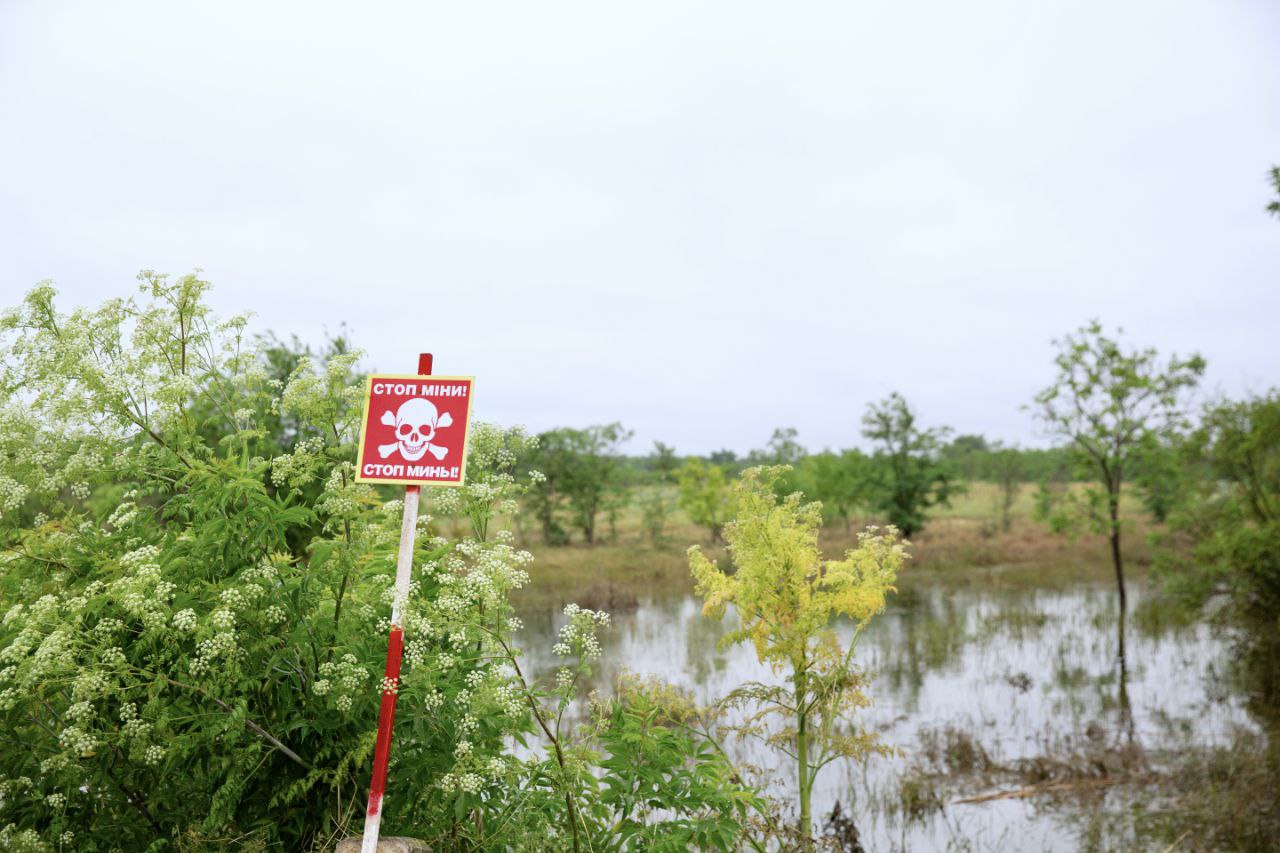
Mine-contaminated environment. Photo: Let's Do It Ukraine
Currently, Ukrainian forests have been contaminated with explosive materials due to the ongoing Russian-Ukrainian war. In both the war zone and formerly occupied territories, hundreds of munitions are being neutralized every day by pyrotechnics experts.
In the occupied and liberated territories, heavy military equipment is moved through the forests, military units are located there, and ongoing combat operations are taking place. The State Forestry Agency has reported that more than 40% of forest fires are a direct result of shelling by the Russian forces.
The war affected approximately 3 million hectares of forests in Ukraine, accounting for almost 30% of the country's total forest area. This amount is equivalent to the entire area of Belgium. Additionally, another 1 million hectares in the occupied territories have been damaged. However, the forestry in the liberated territories is unsuitable for use and analysis due to the need for extensive demining that could take decades to complete.
Air
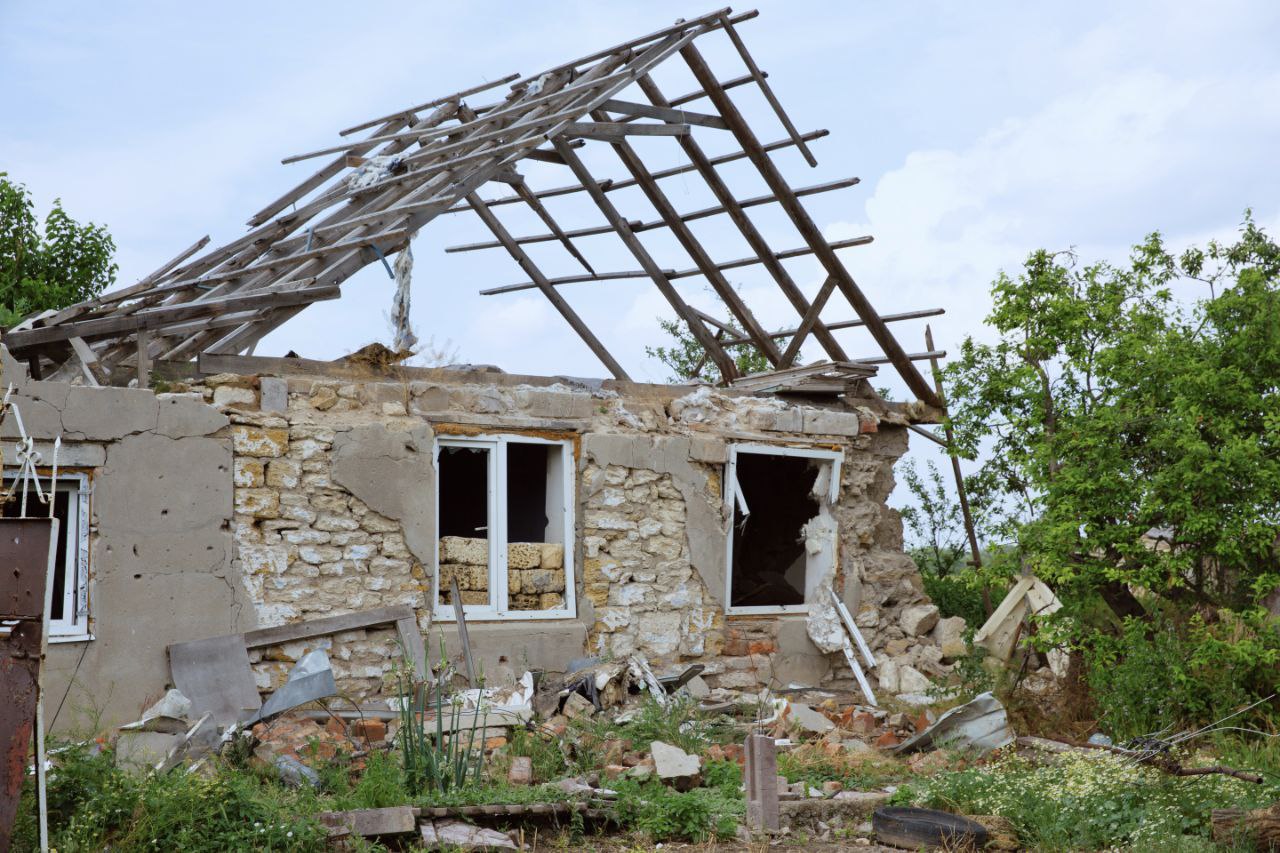
The Russians destroyed the house. Photo: Let's Do It Ukraine
Constant shelling by the Russians leads to numerous fires and, as a result, harmful emissions into the atmosphere.
- Forest fires released 54,685,316 tons of emissions into the atmosphere.
- The combustion of fossil fuels produced 979,526 tons of emissions into the atmosphere.
- The burning of various materials accounted for 11,867,946 tons of atmospheric emissions.
A total of 67,532,788 tons of hazardous emissions have been released into the atmosphere since the commencement of the war. This alarming figure has significant implications for the quality of the air we breathe, as it contributes to air pollution and poses health risks for humans, particularly in terms of respiratory and cardiovascular issues. Furthermore, these emissions also contribute to global warming and ecosystem disruptions, making it a pressing issue for Ukraine and the entire world, as the environment knows no boundaries. The environmental damage caused by Russian actions in Ukraine will have far-reaching consequences, eventually impacting other continents.
What is the solution?
To effectively restore the environment, it is imperative to accurately assess the current condition of our ecosystems and conduct thorough investigations to gather proof of any environmental offenses. This can only be achieved by obtaining a comprehensive understanding and involving reputable experts from different regions. Therefore, we appeal to all readers to prioritize environmentally-friendly actions in their daily lives, regardless of their location.
How does it work?
If an ecocide occurs in one region, individuals in other cities and countries can aid in restoring balance to the ecosystem. This can involve measures such as reducing their carbon footprint by utilizing environmentally friendly transportation methods, properly sorting and managing waste, responsibly utilizing Earth's resources, and reducing excess production while promoting the reuse of items.
Learn more about it in the Ecorubric materials and on the website letsdoitukraine.org (or on the social networks of the public organization — Instagram and Facebook).
Authors: Yuliia Markhel, Anastasia Koshuba, Maryna Polyvach
Water
 Flooding after the Russians blew up the Kakhovka HPP. Photo: Let's Do It Ukraine
Flooding after the Russians blew up the Kakhovka HPP. Photo: Let's Do It Ukraine
Taking water samples. Photo: Let's Do It Ukraine
Forests

Mine-contaminated environment. Photo: Let's Do It Ukraine
Air

The Russians destroyed the house. Photo: Let's Do It Ukraine
Newsletter
Digest of the most interesting news: just about the main thing







